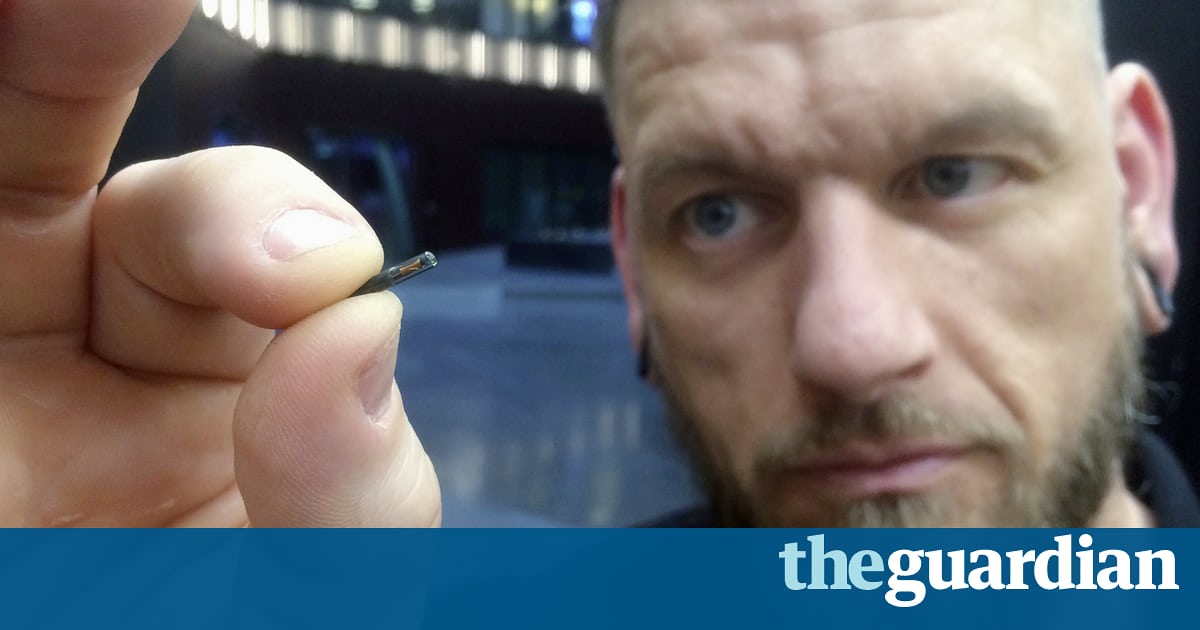Under the skin: how insertable microchips could unlock the future

Volunteers in Melbourne have had microchips inserted for three months, designed to unlock doors and carry out other tasks. Will they really be any use?

The microchip is about the size of a grain of rice and usually inserted in the webbing between the thumb and forefinger using a needle the same thickness as used in body piercing.
It feels, says insertable technology expert Kayla Heffernan, like getting a drip.
Once the needle is removed the incision heals in a few days and the microchip remains, allowing the wearer to open doors with the brush of a hand provided they only wish to access one particular place.

Commercially available insertable microchips are only large enough to hold one access code and a small amount of other information, so the days of replacing an entire wallet and keychain with a tiny computer under the skin are not yet upon us.
The future is coming, but its not in a rush.
Ten volunteers received a microchip at the Australian Centre for the Moving Image in Melbourne on Wednesday to mark the launch of Pause Fest, a technology and culture festival now in its eighth year.
Their chips were preloaded with a three-day pass to the festival and will be programmed to unlock the door to their home, gym, or workplace, or potentially to function as their public transport pass.
When the festival is held in four months time, the volunteers will take part in a panel with Heffernan to talk about whether they found the chips useful.
Heffernan has had one microchip between her thumb and forefinger for almost 18 months, which she uses to unlock her front door. She got another on the outer edge of her other hand last November to access her office at Melbourne University.
She is doing a PhD on the applications of insertable technology and decided to get a chip after a year spent listening to people wax lyrical about the convenience of never having to carry their keys.
If I want I can just walk out without any keys, my key is in my hand so I cant forget it, which is handy because I have locked myself out before, Heffernan says.
Some people use it to unlock their phones or their computers. Some people have modified their cars and one person even their motorbike, so its not only access to their house but its access to their vehicle and to turn it on. Obviously that requires quite a bit of microelectronics and physical mechanical work, and thats not accessible for everyone.
Heffernans original chip usually contains a link to her website, which people can access if they scan her hand with their phone, provided they have the near-field communication (NFC) capabilities switched on. At the moment it just says hello because she is demonstrating that it could be reprogrammed.
The security risk, she says, is quite low.
The read range is very short, so you have to be touching my hand, she says. Im going to know if thats happened. And even for a nefarious purpose, if someone knocked me out, lets say, it has my website on it. It doesnt have anything useful that theyre going to be able to take.
Insertable microchips made global headlines earlier this year when Stockholm firm Epicentre gave its staff the option of having an insertable chip in lieu of a swipe card. Three Square Market, a tech company in Wisconsin, followed suit.